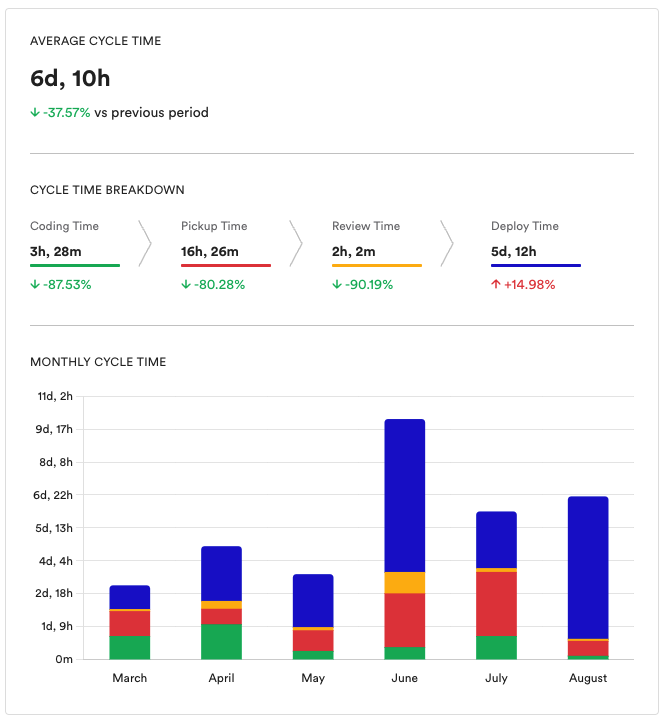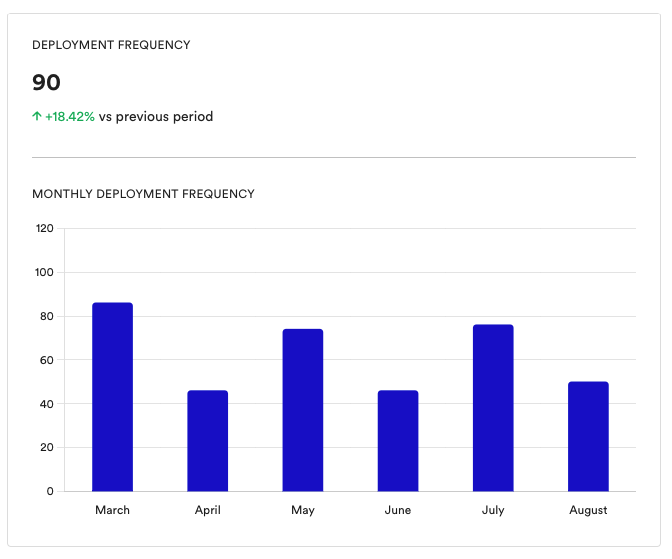Metrics explained
Average Cycle Time
The cycle time represents the time it takes for a feature to get into production. From a technical point of view, it represents the average difference between two moments:
- The time when the branch enters a release (see the definition of a release)
- The time when the first commit is made
The Average Cycle Time itself represents a useful statistic, as the Git Version Control System itself cannot capture the exact moment when work on a particular feature started.

NoteOnly released branches are part of these statistics, as for the unreleased branches, the cycle time has not ended yet.
Cycle Time Breakdown
The cycle time is further broken down into four intervals.
- CODING TIME: This is the time interval between the first commit and the opening of the Pull Request.
If a Pull Request has no comments, the approval time will be considered instead. - PICKUP TIME: This is the interval between the opening of Pull Request and the first comment on it.
In case the Pull Request has no comments, the approval time will be taken - REVIEW TIME: This is the interval between the first comment on a Pull Request and its approval.
In case the Pull Request has no comments, this time will be considered equal to 0. - DEPLOY TIME: This is the time since the Pull Request has been approved, until it was released (see the definition of a release).
Deployment Frequency
This metric indicates the average number of releases per month.
NoteThe value displayed for the current month is running.
This is why in some cases it may be lower when compared to previous months.
Monthly Deployment Frequency
The deployment frequency is further broken down by month. Bunnyshell will always display the deployment frequency for the last six months on the selected repositories.

Updated 4 months ago
